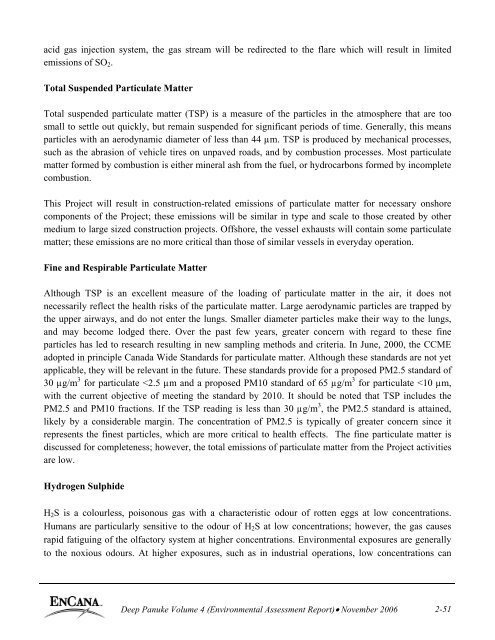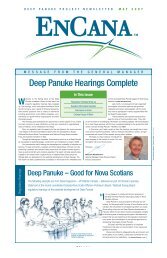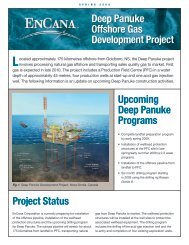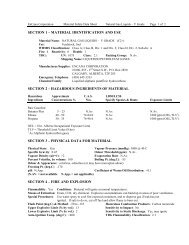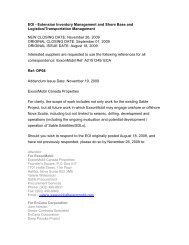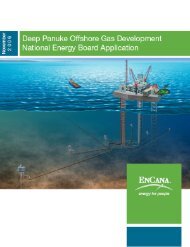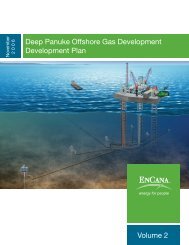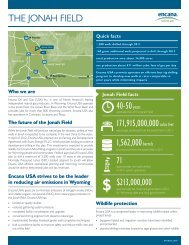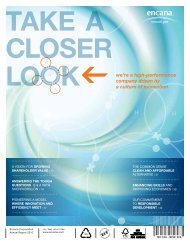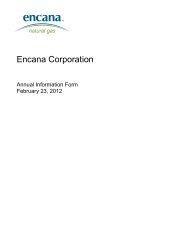Deep Panuke Project Description - Encana
Deep Panuke Project Description - Encana
Deep Panuke Project Description - Encana
You also want an ePaper? Increase the reach of your titles
YUMPU automatically turns print PDFs into web optimized ePapers that Google loves.
acid gas injection system, the gas stream will be redirected to the flare which will result in limitedemissions of SO 2 .Total Suspended Particulate MatterTotal suspended particulate matter (TSP) is a measure of the particles in the atmosphere that are toosmall to settle out quickly, but remain suspended for significant periods of time. Generally, this meansparticles with an aerodynamic diameter of less than 44 µm. TSP is produced by mechanical processes,such as the abrasion of vehicle tires on unpaved roads, and by combustion processes. Most particulatematter formed by combustion is either mineral ash from the fuel, or hydrocarbons formed by incompletecombustion.This <strong>Project</strong> will result in construction-related emissions of particulate matter for necessary onshorecomponents of the <strong>Project</strong>; these emissions will be similar in type and scale to those created by othermedium to large sized construction projects. Offshore, the vessel exhausts will contain some particulatematter; these emissions are no more critical than those of similar vessels in everyday operation.Fine and Respirable Particulate MatterAlthough TSP is an excellent measure of the loading of particulate matter in the air, it does notnecessarily reflect the health risks of the particulate matter. Large aerodynamic particles are trapped bythe upper airways, and do not enter the lungs. Smaller diameter particles make their way to the lungs,and may become lodged there. Over the past few years, greater concern with regard to these fineparticles has led to research resulting in new sampling methods and criteria. In June, 2000, the CCMEadopted in principle Canada Wide Standards for particulate matter. Although these standards are not yetapplicable, they will be relevant in the future. These standards provide for a proposed PM2.5 standard of30 µg/m 3 for particulate


